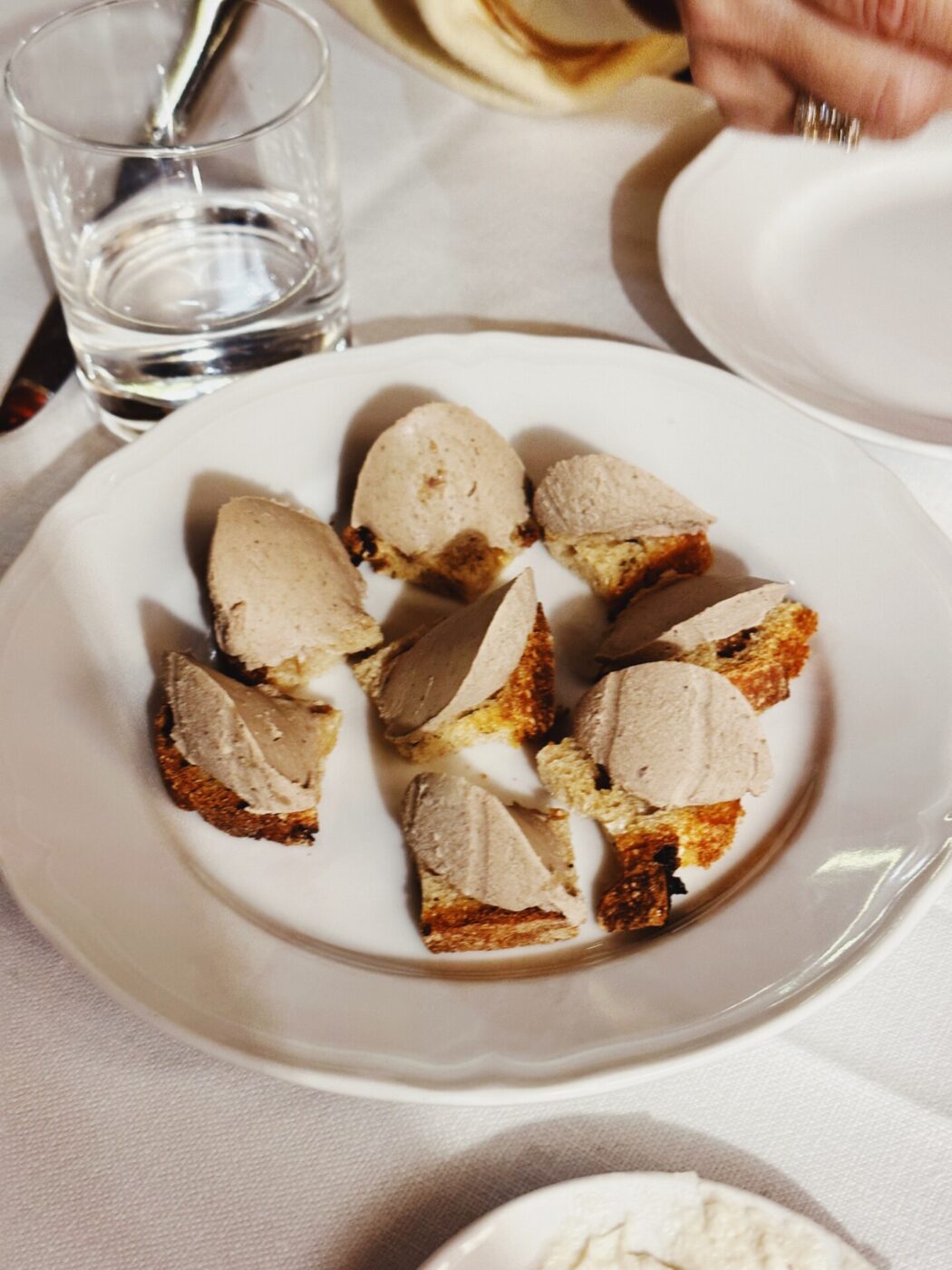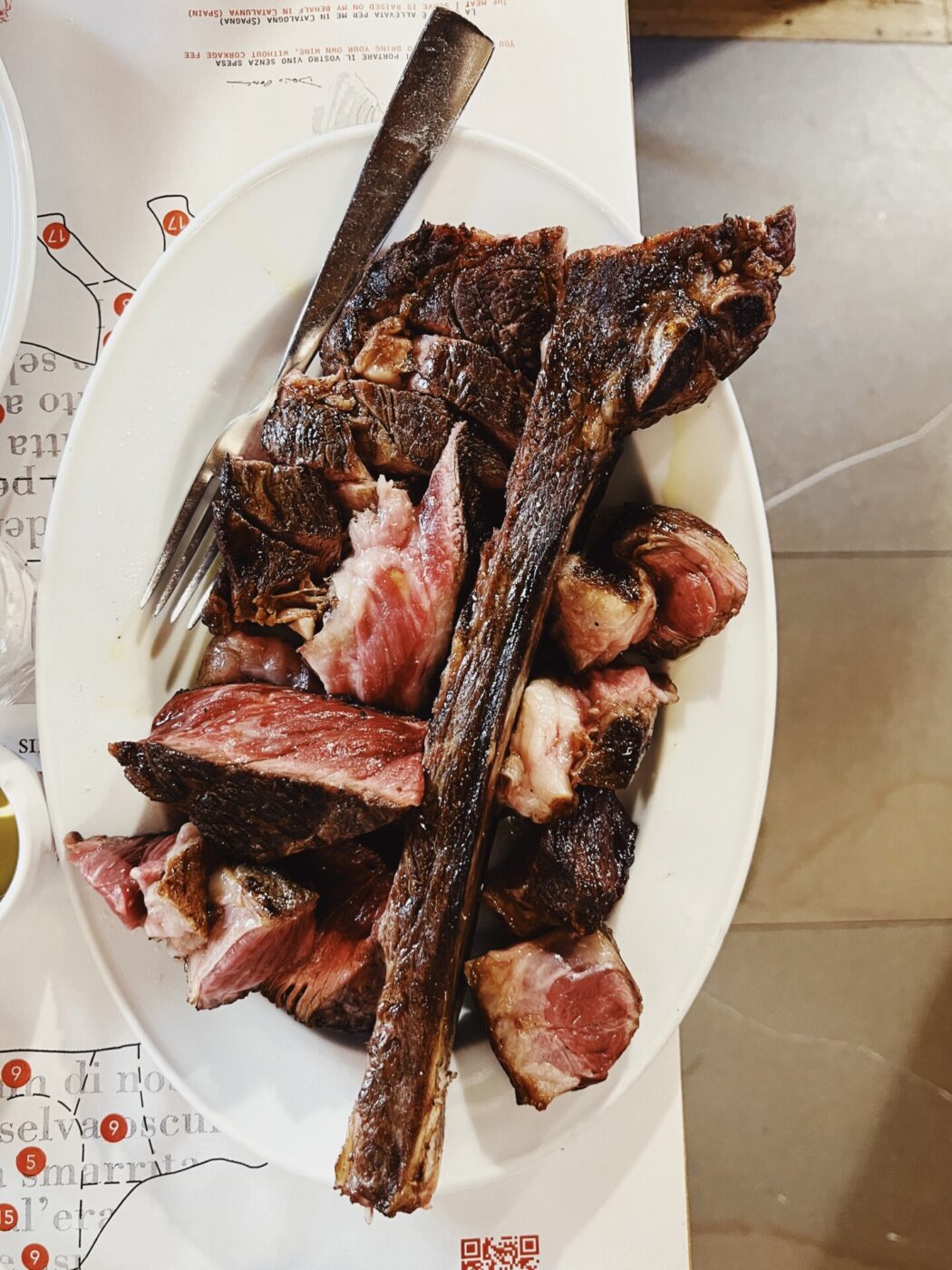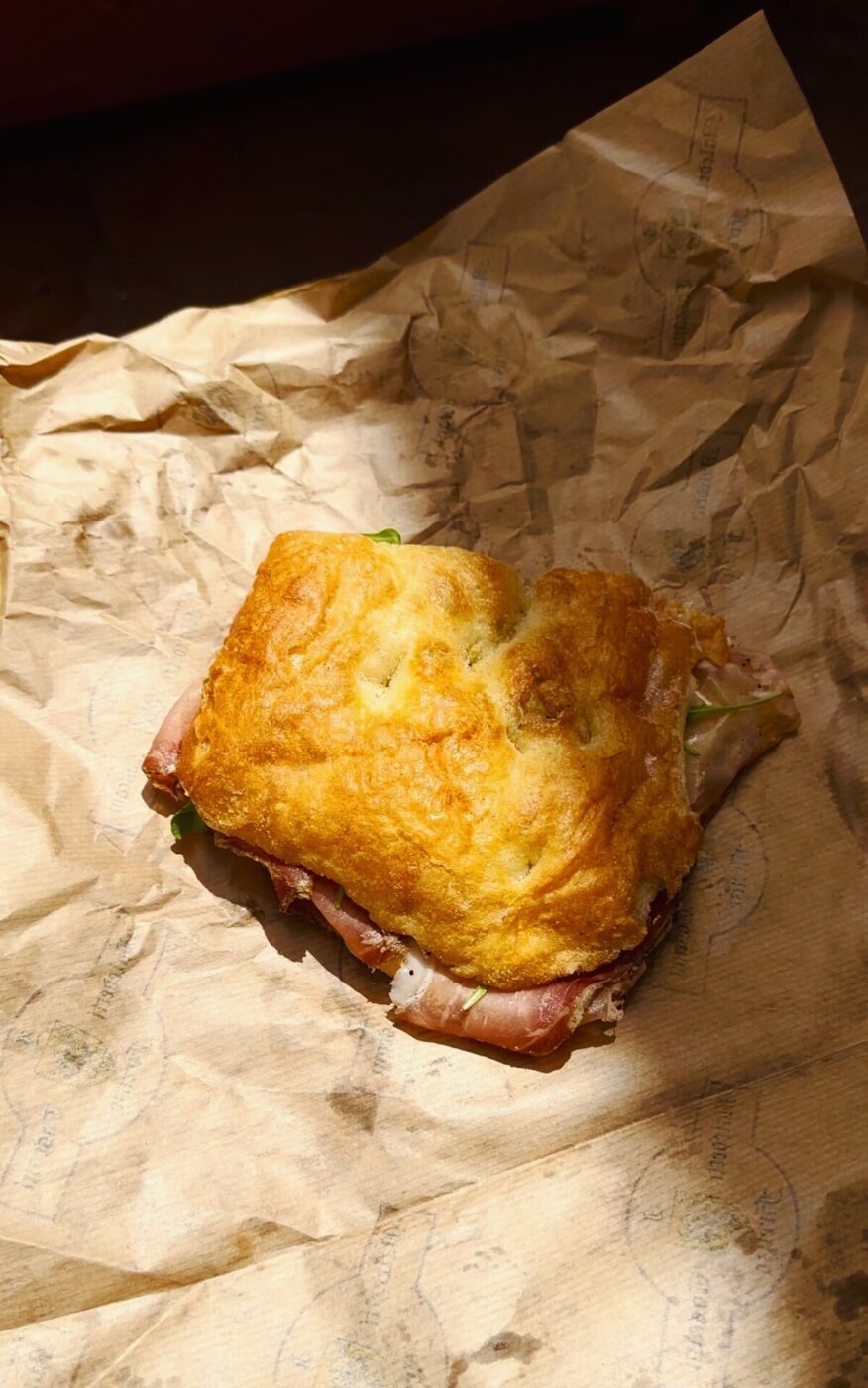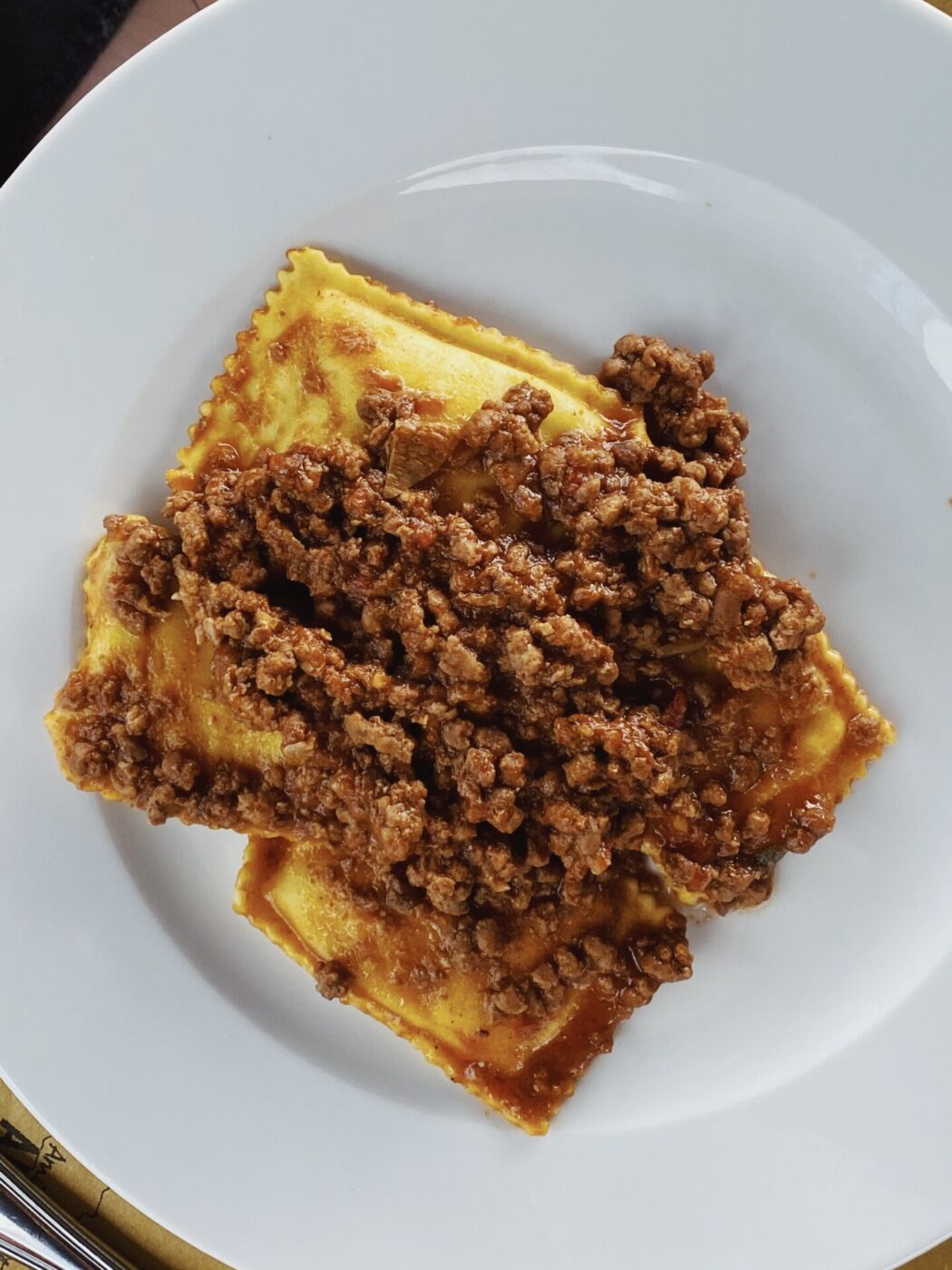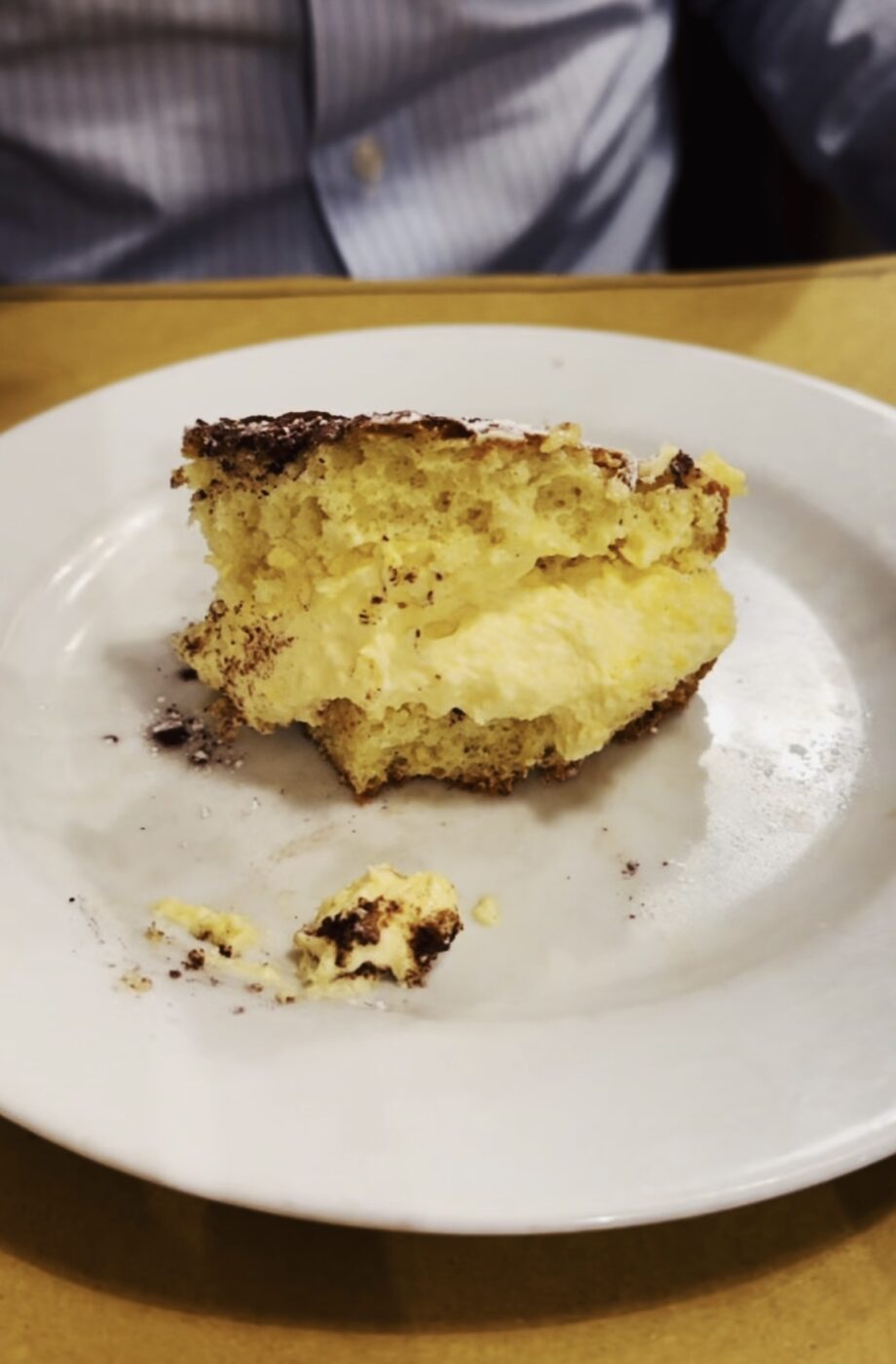Italy Segreta is headquartered in Florence, so yes, we are a little biased, but we think Florence and its surroundings boast one of Italy’s richest gastronomic cultures. The long-reigning, wealthy Medici family played a major role in the city’s culinary development: their patronage of the arts, sciences, and education extended to the culinary world, and under their patronage, Florence became a hub for gastronomic experimentation and culinary innovation. They are the ones we can thank for the invention of Italians’ favorite summer treat, gelato, as well as the iconic bistecca alla fiorentina. Alongside the Medici was another strong force at play–that of the cucina povera, a focus on humble, local ingredients and thrifty “nothing is thrown away” mentality. Beans, potatoes, vegetables, and assorted cuts of meat are integral parts of Tuscan cuisine, and the amount of recipes that include legumes has earned Tuscans the nickname “mangiafagioli” (bean eaters).
Here, 20 Florentine dishes that you must try next time you’re in the Renaissance city–unsalted bread not included.
Aside from the places we’ve mentioned here, a complete list of our favorite restaurants can be found in our article Firenze a Tavola.
Pappa al Pomodoro
Don’t let the name of this dish–literally “tomato mush” deter you–the rustic pappa al pomodoro is one of the most classic Florentine dishes. Born in the 18th century as a way to reuse stale bread, the dish wasn’t really known outside of Florence until 1911, when Rita Pavone sang the song “Viva la pappa col pomodoro” in the TV adaptation of Il Giornalino di Gian Burrasca. A simple base of tomato (either fresh tomatoes that are boiled and pureed, or canned whole tomatoes, hand-crushed), garlic, oil, and basil is thickened with leftover bread and topped with freshly grated parmesan. Make it in the summer during tomato season and serve chilled, or cozy up with a warm bowl by the fire in the winter.
Where to Try Our Favorite Version: Da Burde
Coccoli with Prosciutto and Stracchino
Coccoli means “cuddles” in Italian and for good reason, because the pillowy fried balls of yeasty, oily dough taste like bite-size snuggles. Served as an antipasto or at aperitivo, the warm, crunchy coccoli are perfect torn in half and filled with salty prosciutto Toscano and creamy stracchino cheese.
Where to Try Our Favorite Version: Enoteca alla Sosta dei Papi (alongside a spritz)
Crostini con Fegatini
Crostini con fegatini are every Florentine’s favorite antipasto. Velvety, extra-salty chicken liver pâté gets spread over small, well-toasted pieces of otherwise flavorless Tuscan bread. The pâté is rich but not overpowering, with hints of the garlic, onion, herbs, and olive oil that the livers are sauteed in. Crostino comes from the Italian word “crosta”, meaning “crust”, and crostini con fegatini, among others, can be found on every menu in Florence.
Where to Try Our Favorite Version: Enoteca Spontanea, Cibrèo Caffè

Roast Beef con Patate al Forno
By now, you can tell that Florentines like their beef. Aside from bistecca, the best way to order the meat here is arrosto con patate al forno. A high-quality cut, like tenderloin or ribeye, is seared with a blend of seasonings–rosemary, thyme, pepper, and/or garlic–to create a thick crust and placed in the oven to finish cooking (but only to medium-rare). But the potatoes, which should be served alongside the meat, are the MVPs: thick chunks, cooked until crispy, golden, and totally infused with flavor from the beef drippings. (If the starchy tubers aren’t included, make sure to order some from the contorno section of the menu!)
Where to Try Our Favorite Version: Trattoria Sabatino
Pappardelle al Cinghiale
The many cinghiale (wild boar) that frolic through the Tuscan countryside (and occasionally make their way into the city) are not to be messed with, but they are deliciously tasty. Cinghiale are most often served in a ragù on top of pappardelle, a wide, long, and flat shape of pasta that originates from Tuscany. The meat marinates overnight in red wine, herbs, and vegetables, and is slow-cooked with onions, garlic, carrots, celery, tomatoes, and a variety of herbs and spices. This dish pairs exceptionally well with a showering of parmigiano and a glass of Chianti.
Where to Try Our Favorite Version: Trattoria del Carmine, Trattoria Sergio Gozzi
Bistecca alla Fiorentina
One of the city’s most famous dishes, bistecca alla fiorentina was born during the time of the Medici. During the celebrations of San Lorenzo, the lords of the city grilled and served large quantities of fine cuts of meat to Florentine citizens. The name “bistecca” comes from visiting English knights who loved the meat, loudly cheering for the “beef steak”. The massive, classic, thick-cut T-bone steak is sourced from the local Chianina cattle breed; cold-aged for at least two weeks; grilled; seasoned with just olive oil, salt, and pepper; and served bloody. Don’t you dare ask for it to be cooked any other way. If you want something a bit more well done (and cheaper), go for the tagliata, a smaller, boneless steak that is served sliced (tagliata literally means “sliced”). If you do order the bistecca alla fiorentina, prepare to share, as even the bulkiest calcio storico players struggle to finish the 1-1.5 kilo steaks themselves.
Where to Try Our Favorite Version: Ristorante La Padellina, Il Latini
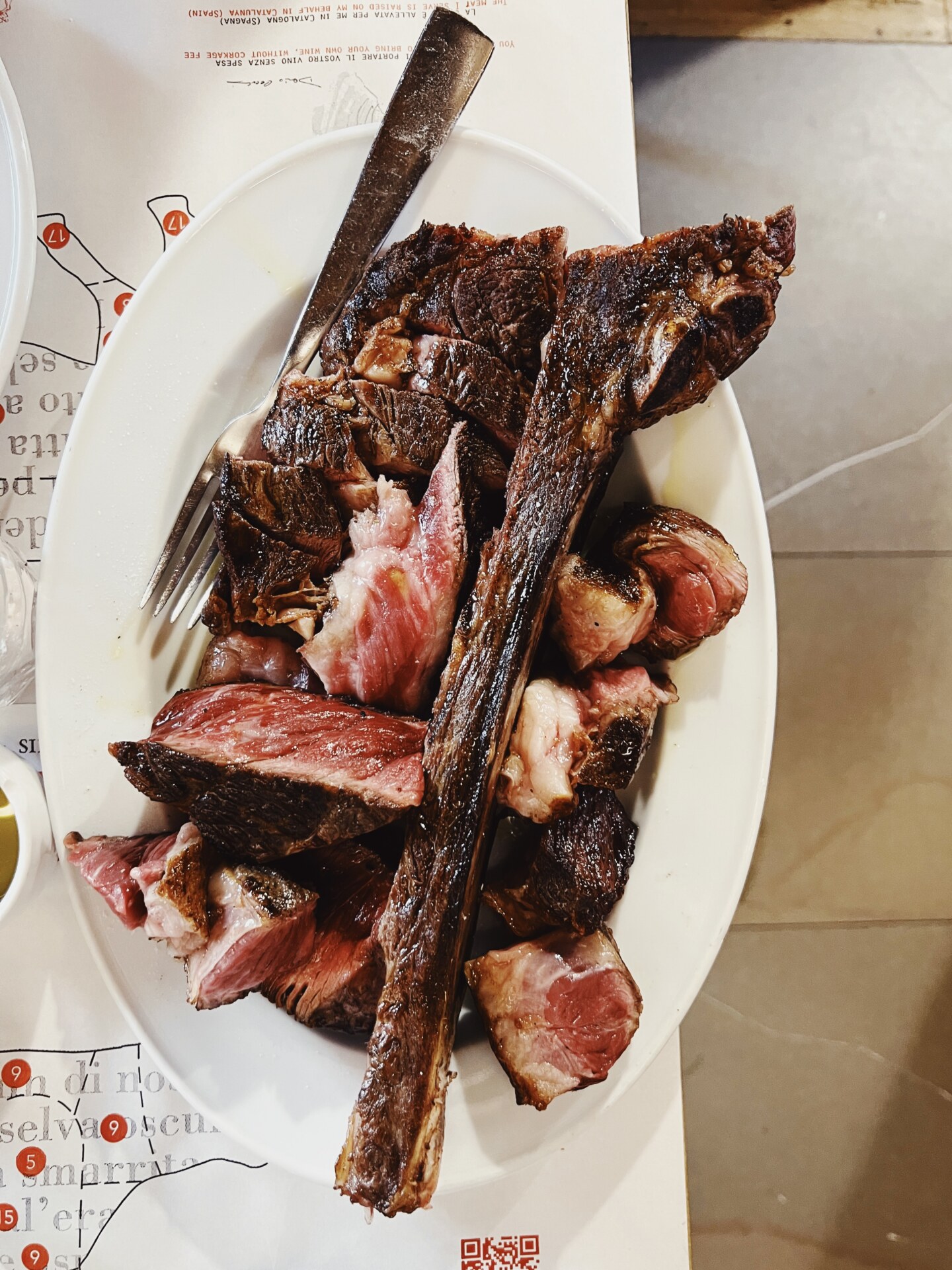
Il Peposo
Il peposo, or peposo alla fornacina, is a traditional Tuscan stew that comes from the town of Impruneta, just outside of Florence. Black pepper constitutes the majority of the stew’s sharply spiced flavor and is where the dish’s name comes from. During the 14th century, the fornacini (kiln workers) of Impruneta made this slow-cooked dish in terracotta pots in the fire alongside bricks and tools. Although expensive, the pepper masked the flavor of their cheap, unfresh cuts. Impressed by the dish’s heartiness, famed Florentine architect Filippo Brunelleschi fed it to the workers who were building the Duomo. The five-ingredient recipe is simple: pieces of beef (today, typically muscle or chuck) are seared, seasoned liberally with black pepper, garlic, and salt, and then stewed all day in red wine, preferably a Chianti. The stew is best served on top of polenta or with a large hunk of bread (Tuscan bread is actually an optimal choice, since the peposo’s flavor is so strong).
Where to Try Our Favorite Version: Osteria Vini E Vecchi Sapori
Panino al Lampredotto
Paninio al Lampredotto–a quintessential Tuscan street food–is an incredibly flavorful sandwich made of the abomasum, the fourth and final stomach of the cow. It is more tender than the rest of the tripe family, especially after it is boiled in an aromatic broth of veggies and herbs. The cooked lampredotto is sliced and placed into a hollowed out, crusty roll and topped with a tangy salsa verde. The secret to the sandwich is that the lampredottai dip the top half of the roll into the lampredotto’s broth before serving.
Where to Try Our Favorite Version: Tripperia Pollini, Lupen e Margo
Il Bollito Toscano
Il bollito Toscano is the tasty embodiment of “non si butta via niente” (nothing is thrown away). Various cuts of meat, often the less-prized ones–beef shoulder, gallina (hen), zampa (leg), zampetti e codino di maiale (pig feet and tail), and lingua (tongue)–are boiled in broth and served with salsa verde and vegetables in agrodolce.
Where to Try Our Favorite Version: Da Burde
Schiacciata Bread
Schiacciata bread is Tuscany’s chewier, flatter version of Liguria’s focaccia. The dough is relatively the same, but schiacciata has a shorter rising time and is aggressively smashed rather than folded (schiacciata means “smashed”) before going in the oven. The thin, crispy product is ideal for snacking with just salt and olive oil or as the base of a panino. During vineyards’ harvest time, a sweet version of schiacciata–schiacciata all’uva–is made with rosemary and grapes that would otherwise be discarded.
Where to Try Our Favorite Version: Schiaccia Passera, Maledetti Toscani
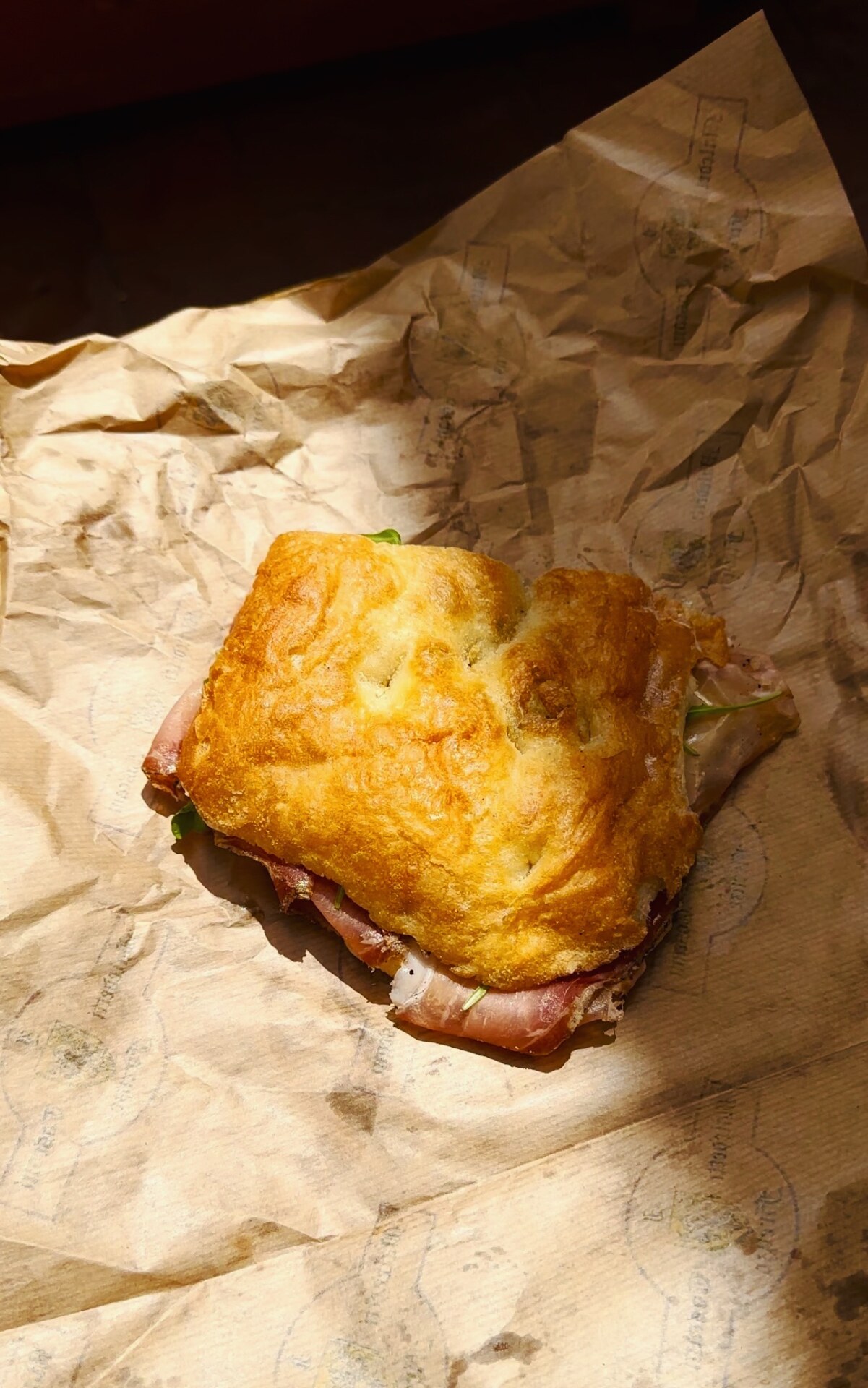
Finocchiona
This highly aromatic, cured-pork salami derives its name and flavor from finocchio (fennel). Black pepper was expensive, so butchers used seeds from the fennel plants that grew wild in the Tuscan countryside to season and flavor the meat. It’s slightly sweet, and most commonly served in a panino or thinly sliced alongside other cured meats on an antipasto board. Popular legend says that finocchiona was originally used to mask the taste of the most undrinkable Chianti wine, but the salami deserves to be celebrated as more than just a coverup.
Where to Try Our Favorite Version: Deli 1891 Firenze
Ribollita
Ribollita is a flavorful soup of cavolo nero (kale), cannellini beans, carrots, celery, potatoes, onions, tomatoes, herbs, and garlic that gets thickened with chunks of stale bread. The name neams “reboiled”, and the soup is intended to sit overnight and be reheated before eating. It’s the best solution for leftovers, a busy weeknight, or to combat cambio di stagione.
Where to Try Our Favorite Version: Il Santo Bevitore
Fagioli all’Uccelletto
This stewed Tuscan contorno translates to “beans in the style of little birds”. Although the name mentions meat, the dish is traditionally vegetarian, made with cannellini beans and flavored with the same trio of ingredients–tomatoes, garlic, and sage–that was commonly used to prepare game birds. A must try whether or not you’re one of the mangiafagioli.
Where to Try Our Favorite Version: Trattoria Le Mossacce, Sostanza

Trippa Fiorentina
A shining star of Tuscan street food, trippa Fiorentina is thin strips of tripe simmered with onions, carrots, celery, hot peppers, and tomatoes and topped with parmesan, olive oil, and fresh basil. If you’re hesitant about offal, this is the dish to start with.
Where to Try Our Favorite Version: Il Magazzino
Panzanella
It’s salad, it’s bread, it’s summer, it’s panzanella: a ridiculously easy combination of stale bread, tomatoes, onions, and often cucumbers and basil, dressed with a simple vinaigrette of olive oil, plenty of salt (especially if you use Tuscan bread), black pepper, and red wine vinegar. It’s pappa al pomodoro’s irresistible, easygoing cousin who comes to town for the summer, and we have a recipe here.
Where to Try Our Favorite Version: The best ones really are homemade! Here’s our ultimate recipe (again).
Tortelli di Mugellani
Each Italian region has their own version of a stuffed pasta, and tortelli di Mugellani is the one you will find in Florence (and its province). Hailing from the agrarian region of Mugello, the pasta is a simple, yellow dough of water and eggs that gets filled with a mixture of boiled potato, cheese, garlic, parsley, and nutmeg. First sown in Tuscany in the 1800s, potatoes were an optimal choice for the filling since they were grown in abundance, cheaper than cheese, and more filling. The tortelli are typically served with a ragù of cinghiale (wild boar).
Where to Try Our Favorite Version: Trattoria Sabatino
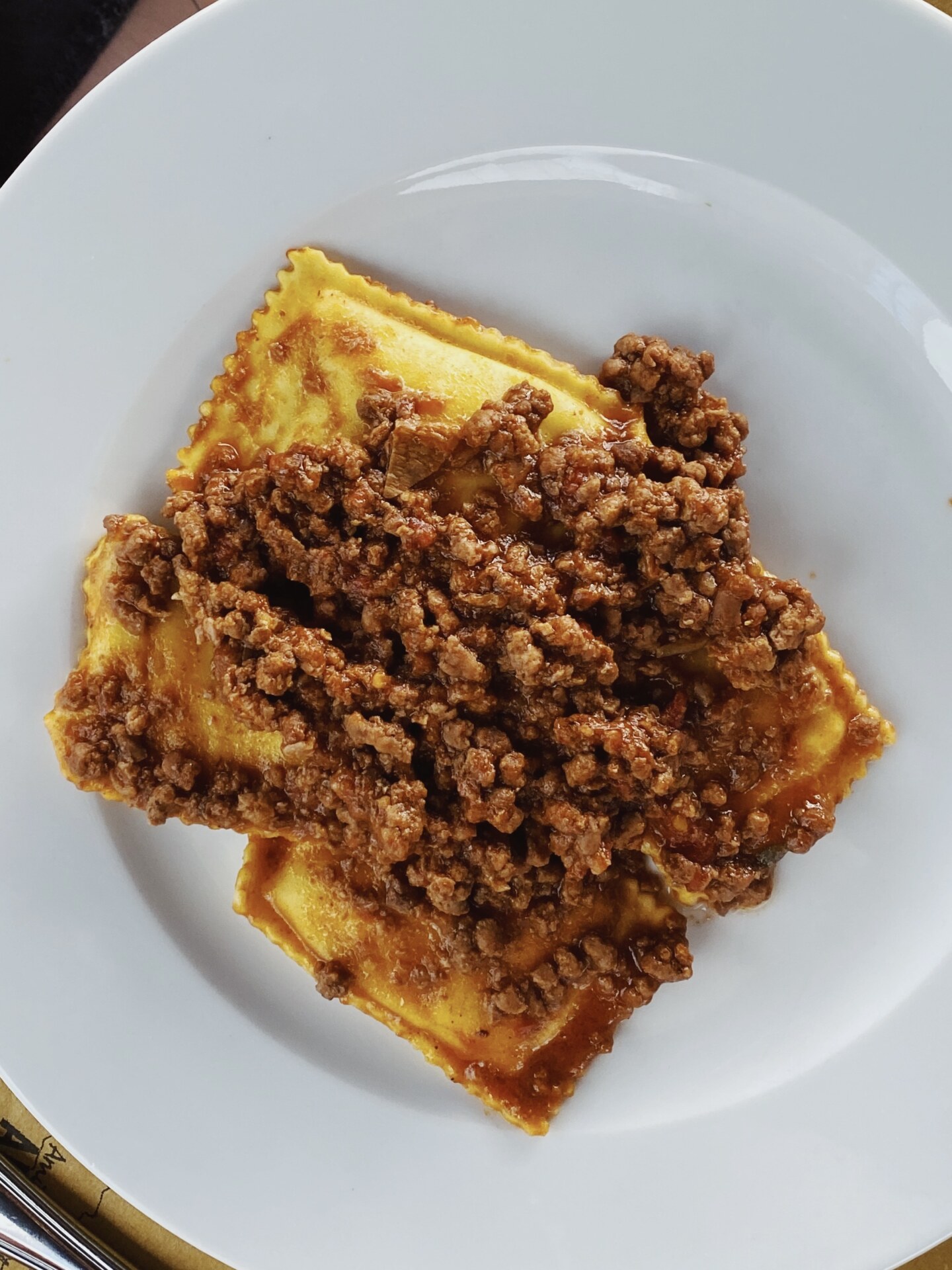
Cantucci with Vin Santo
Cantucci, what Americans call “biscotti”, stem from the time of the Roman empire when the twice-baked, unleavened cookies were used as food for the soldiers. Then, during the Renaissance, a Pratese baker reinvented the cookie by adding almonds that grew in plenty around Prato and pairing the cantucci with a sweet wine. These tough cookies come in all flavors, but almond is the most traditional and the best to pair with vin santo. Translating to “saint’s wine”, the amber-colored, honey-flavored dessert wine is made from one or both of Trebbiano or Malvasia grapes and is the perfect palette cleaner after a rich Tuscan dinner.
Where to Try Our Favorite Version: Alla Vecchia Bettola
Castagnaccio
If you could bake Italian autumn into a cake, it would be castagnaccio. The dense, nutty torta is made of flour from the chestnuts that grow wild around the Tuscan hills and is filled with raisins, pinenuts, walnuts, and rosemary. If done correctly, the top should form a thin crust and the inside should stay moist and chewy. A great choice for those who don’t like super sweet desserts.
Where to Try Our Favorite Version: Cantinetta dei Verrazzano
Torta Pistocchi / Al Cioccolato
In 1990, Chef Claudio Pistocchi invented a cake using just ciocolatto fondente, bitter cocoa powder, and a little cream. The cake is as rich and dark as you’d imagine, incredibly creamy and best served at room temperature. It has become so famous that the Pistocchi family trademarked it, and you can buy it online. Many Florentine restaurants serve their version of the well-loved, eggless, flourless cake with the non-trademarkable name “torta al cioccolato”.
Where to Try Our Favorite Version: Enoteca Spontanea, Cibrèo Caffè
Schiacciata Alla Fiorentina
Although this soft, fluffy, orange-flavored cake can be eaten all year round, it’s traditionally made for carnevale. The spongy schiacciata is filled with a layer of vanilla crema, topped with a heavy dusting of powdered sugar, and adorned with cocoa powder in the shape of a Giglio (fleur de lis), the symbol of Florence.
Where to Try Our Favorite Version: Caffè Pasticceria Serafini, Pasticceria Giorgio
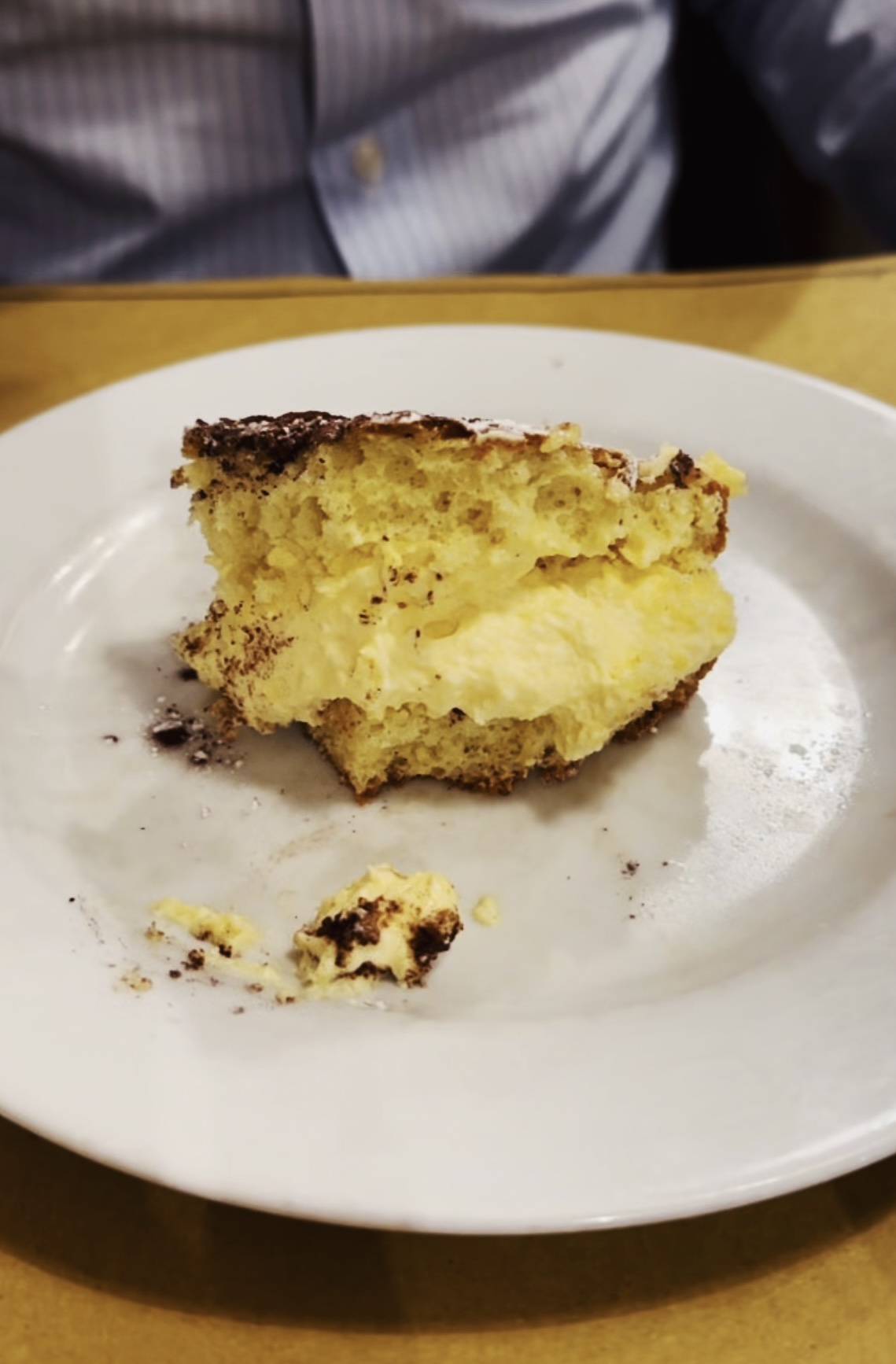
Eat Your Greens! Bonus Dish: Spinaci/Bietola Saltata
Although the Florentine cuisine of cucina povera is traditionally based on vegetables, the only greenery you’ll probably find on menus today is a contorno of spinaci or bietola saltata (sautéed chard). For some reason, these garlicky, oily mounds of wilted greens have surpassed all other vegetables in the Florentine’s eyes, even ones that grow well in Tuscany like cavolo nero and cardoons. It’s by far a better choice than insalata mista, the only other consistent vegetable option and a usually sad salad of out-of-season produce.
Where to Try Our Favorite Version: Cammillo, Buca dell’Orafo

